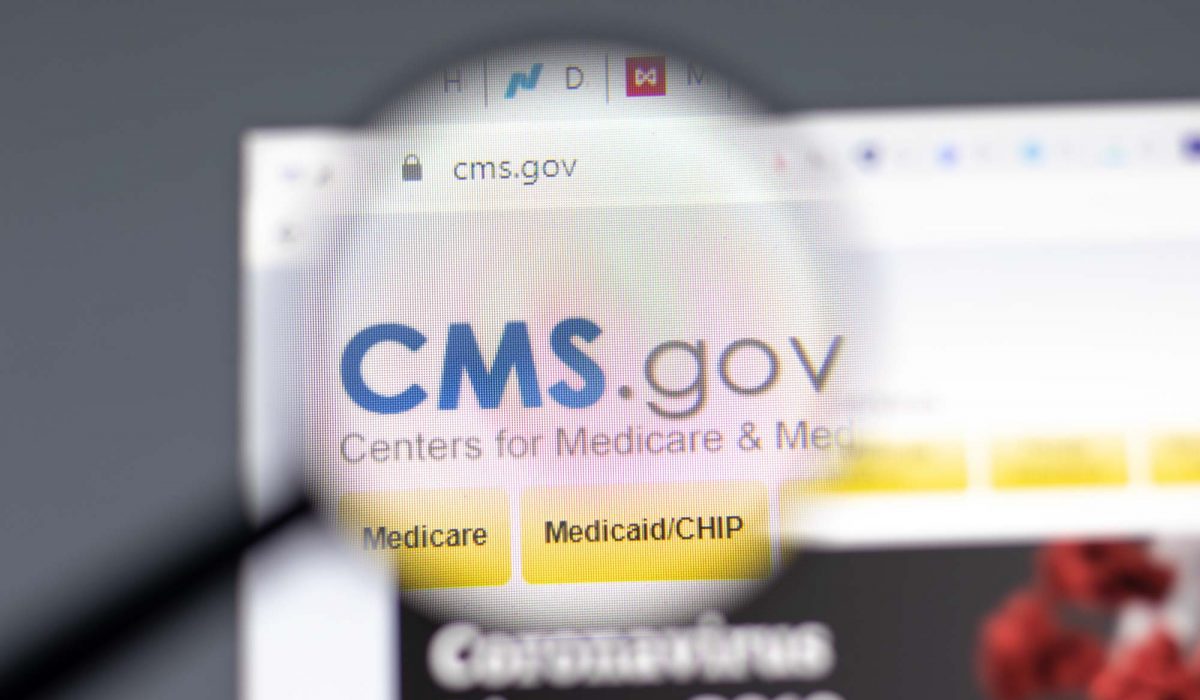Key Takeaways from Final CY 2025 Medicare OPPS and ASC Payment System and MPFS Proposed Rules
Last week, the Centers for Medicare & Medicaid Services (CMS) proposed several rules, including the Calendar Year (CY) 2025 Hospital Outpatient Prospective Payment System (OPPS) and ASC Payment System and Medicare Physician Fee Schedule (MPFS) Proposed Rules. The final rules are set to be issued in early November. The 60-day comment period will end on September 9, 2024.
Key takeaways from both the OPPS/ASC and MPFS proposed rules include:
- Increasing OPPS payment rates by 2.6% while decreasing average MPFS payment rates by 2.93%;
- Adopting several provisional telehealth flexibilities and continuing some pandemic-era waivers (such as continuing to reimburse phone calls with beneficiaries within their homes) to increase access to telehealth services;
- Introducing new measures in both rules to prevent and treat Opioid abuse, including increased reimbursement rates for certain services;
- Enhancing access to primary care via a new set of “Advanced Primary Care Management Services” (APCM) codes that focus on care quality rather than time spent with the beneficiary; and
- Updating several quality reporting program metrics for outpatient, ASC, and REHs.
The proposed rules, notably issued after the United States Supreme Court’s ruling in the Relentless and Bright Enterprises cases weakened the agency’s authority by repealing the Chevron doctrine, remain silent on several topics where CMS guidance may have previously been considered. Among several potential topics, the proposed rules notably do not address further site neutral rate revisions for Hospital Outpatient Departments (HOPDs), mandatory attestation and NPI filings for HOPDs, off-campus emergency department payment revisions, and 340B transparency measures. It appears CMS will continue to await Congressional direction on these topics prior to proposing additional rulemaking.
Advis prepared a summary of key provisions from each of the proposed CY 2025 rules below. Should you have any questions regarding these CMS policies, please contact Advis at 708-478-7030 or via our website.
OPPS and ASC Payment System Proposed Rule
- OPPS and ASC Payment Rates
CMS proposed updating OPPS payment rates for hospitals that meet applicable quality reporting requirements by 2.6%. CMS based the updated rate on the projected hospital market basket percentage increase of 3.0% and decreased it by 0.4 percentage points to account for the productivity adjustment.
For ASC payment rates, CMS has extended the interim period of five years to apply the productivity-adjusted hospital market basket update to ASC payment system rates for another two years through CY 2024 and 2025. Accordingly, using the hospital market basket update, CMS proposed an update factor to the ASC rates for CY 2025 of 2.6%. This update is based on the proposed IPPS market basket percentage increase of 3.0%, reduced by 0.4 percentage points for the productivity adjustment.
- Non-Opioid Treatments for Pain Relief
Pursuant to congressional directives from the Consolidated Appropriations Act (CAA), 2023, CMS is providing temporary additional payments for certain non-opioid treatments for pain relief in the hospital outpatient department (HOPD) and ASC settings from January 1, 2025, through December 31, 2027.
The CAA limits the additional payment to 18% of the OPPS payment for the OPPS service/group of services within with the non-opioid treatment for pain relief is furnished. Accordingly, CMS is proposing to initially assign a payment offset of zero dollars for the qualifying non-opioid products. CMS will then utilize the top five OPPS procedures by volume for each nonopioid drug or device to calculate the payment limitation.
CMS proposed that the following seven drugs and one device qualify as non-opioid for payment in both the HOPD and ASC settings starting in CY 2025:
- Exparel
- Omidria
- Dextenza
- Xaracoll
- Zynrelef
- Ketorolac tromethamine Injection
- ON-Q Pump
- Intensive Outpatient Program (IOP)
For CY 2025, CMS has not proposed any changes to the existing rate structure, which utilizes two IOP Ambulatory Payment Classifications (APCs) for each provider type. CMS proposed maintaining the calculation of both hospital outpatient and CMHC IOP payment rates for three services per day and four or more services per day, based on cost per day using OPPS data that includes Partial Hospitalization Program (PHP) and non-PHP days. CMS plans to use CY 2023 claims data and the latest available cost information from cost reports beginning three fiscal years prior to the year that is the subject of the rulemaking.
- Partial Hospitalization Program (PHP)
CMS has proposed maintaining the existing rate structure to reimburse providers for PHP services. Like IOP, CMS plans to use CY 2023 claims data including both PHP and non-PHP days to reimburse both hospital outpatient and Community Mental Health Center (CMHC) PHP providers.
- OPPS Payment for Remote Services
The proposed rule provides clarification on payment for outpatient therapy services, diabetes self-management training (DMST), and medical nutrition therapy (MNT) when furnished by institutional staff to beneficiaries in their homes.
Payment for outpatient therapy, furnished by providers including clinics, rehabilitation agencies, public health agencies, comprehensive outpatient rehabilitation agencies (CORFs), SNFs, home health agencies (HHAs), hospitals to outpatients or certain hospital inpatient patients, must be made based on rates outlined in the Medicare Physician Fee Schedule (PFS). Further, in the case of payments made to other approved entities, such as hospital outpatient departments, ESRD facilities, and durable medical equipment suppliers, the payment would be equal to the amounts established under the PFS and made under the appropriate payment systems.
During the PHE for COVID–19, outpatient therapy services, DSMT, and MNT could be furnished via a telecommunications system to beneficiaries in their homes, and bills for these services were submitted and paid either separately or as part of a bundled payment. CMS anticipates aligning its policy for these services with policies under the PFS and continuing to make payment to hospitals for these services when furnished by hospital staff.
- Quality Reporting Programs
CMS proposed adopting three measures related to health equity for the outpatient, ambulatory surgical center and rural emergency hospital quality reporting programs:
(1) the Hospital Commitment to Health Equity (HCHE) measure beginning with the CY 2025 reporting period/CY 2027 payment determination
(2) the Screening for Social Drivers of Health (SDOH) measure beginning with voluntary reporting in the CY 2025 reporting period followed by mandatory reporting beginning with the CY 2026 reporting period/CY 2028 payment determination; and
(3) the Screen Positive Rate for Social Drivers of Health (SDOH) measure, beginning with voluntary reporting in the CY 2025 reporting period followed by mandatory reporting beginning with the CY 2026 reporting period/CY 2028 payment determination.
Other Notable Changes
Extension of Direct Supervision Flexibilities:
The CY 2025 PFS proposed rule extends the availability of virtual direct supervision of therapeutic and diagnostic services under the PFS through December 31, 2025.
Proposed Obstetrical Services Conditions of Participation:
CMS proposed new Conditions of Participation (CoPs) for hospitals and Critical Access Hospitals (CAH) for obstetrical services, including new requirements for maternal quality assessment and performance improvement (QAPI), baseline standards for the organization, staffing, and delivery of care within obstetrical units, and staff training on evidence-based maternal health practices on an annual basis. Additionally, revisions to the emergency services CoP related to emergency readiness for hospitals and CAHs that provide emergency services are being considered as well. Finally, CMS proposed revisions to the Discharge Planning CoP for all hospitals and CAHs related to transfer protocols.
Overall Hospital Quality Star Rating:
CMS is requesting input on three potential modifications to the Safety of Care measure group in the Overall Hospital Quality Start Rating methodology.
OPPS Proposal to Improve Payment for Specialized Diagnostic Radiopharmaceuticals:
CMS has proposed changes to the existing packaging policy for diagnostic radiopharmaceuticals and nuclear medicine tests to improve the accuracy of the overall payment amounts by paying separately for any diagnostic radiopharmaceutical with a per day cost greater than $630 and removing their costs from the payment amounts for the nuclear medicine tests. CMS will continue packaging any diagnostic radiopharmaceutical with a per-day cost equal to or below that threshold with costs incorporated into the payment rates for the nuclear medicine tests.
Add-on Payment for Domestically Produced Technetium-99m (Tc-99m):
CMS proposed establishing a new add-on payment of $10 per dose for radiopharmaceuticals that use Tc-99m derived from domestically produced Mo-99.
Individuals Formerly in the Custody of Penal Authorities:
CMS has proposed establishing a new add-on payment of $10 per dose for radiopharmaceuticals that use Tc-99m derived from domestically produced Mo-99 starting on January 1, 2026.
MPFS Proposed Rule
- Rate Setting and Conversion Factor
Average payment rates under the PFS are proposed to be reduced by 2.93% in CY 2025 compared to the average amount these services are being paid for most of CY 2024.
This amounts to a proposed estimated CY 2025 PFS conversion factor of $32.36, a decrease of $0.93 (or 2.80%) from the current CY 2024 conversion factor of $33.29.
- Telehealth Services
CMS proposed adding several services to the Medicare Telehealth Services List on a provisional basis. CMS also intends to extend of several telehealth waivers through 2025, including the suspension of frequency limitations for subsequent inpatient visits, subsequent nursing facility visits, and critical care consultations and virtual supervision for residents in all teaching settings when the services are provided virtually.
CMS notably proposed that an interactive telecommunications system may include two-way, real-time audio-only communication technology for any telehealth service furnished to a beneficiary in their home. The agency will also continue to permit the distant site practitioner to use their currently enrolled practice location when providing telehealth services from their home, allowing providers to render services from their homes.
For select services, CMS also proposed permanently adopting a definition of direct supervision that allows the physician or supervising practitioner to provide such supervision through real-time audio and visual interactive telecommunications, rather than requiring auxiliary staff and the supervising practitioner to be in the same physical location. This will ultimately allow providers additional flexibility in providing services when a rendering provider is not on-site.
While CMS granted additional flexibilities on distant sites, absent congressional activity on the subject, rural geographic requirements for the location of the patient will again become effective at the end of this year, when the pandemic-era exception expires.
- Advanced Primary Care Management Services (APCM)
CMS proposed establishing coding and payment under the PFS for a new set of APCM services described by three new HCPCS G-codes: GPCM1, GPCM2, and GPCM3.
The new APCM codes would be stratified into three levels based on the number of chronic conditions and enrollment as a Qualified Medicare Beneficiary. The new codes serve to focus less on minutes spent by clinicians on specific activities and more on accessibility and quality of care.
- Behavioral Health Services
CMS is proposing an add-on G-code that would be billed along with an E/M visit or psychotherapy service when safety planning interventions are performed by the billing practitioner.
Additionally, CMS is proposing Medicare payment for digital mental health treatment devices furnished incident to or integral to professional behavioral health services used in conjunction with ongoing behavioral health care treatment. With this, CMS proposes three new HCPCS codes to monitor how digital mental health treatment devices are used as part of overall behavioral health care along with six new G Codes to be billed by practitioners in specialties whose covered services are limited by statute.
Lastly, CMS is seeking comment on topics such as whether coding and payment for Intensive Outpatient Program (IOP) services under the PFS would be appropriate services in additional settings (such as Certified Community Behavioral Health Clinics (CCBHCs)).
- Opioid Treatment Programs (OTPs)
CMS proposed several telecommunication technology flexibilities for opioid use disorder (OUD) treatment services furnished by OTPs including cementing the current flexibility for furnishing periodic assessments via audio-only telecommunications. CMS also proposed an additional flexibility that would allow the OTP intake add-on code to be furnished via two-way audio-video communications technology when billed for the initiation of treatment with methadone (using HCPCS code G2076).
CMS also proposed payment increases for OUD treatment. First, CMS is updated payment for intake activities furnished by OTPs to include payment for social determinants of health risk assessments. CMS also established payment for new opioid agonist and antagonist medications approved by the FDA. This would include a new add-on code for a nalmefene hydrochloride nasal spray product (Opvee®) and payment for a new injectable buprenorphine product (Brixadi®).
- Rural Health Clinics (RHCs) and Federally Qualified Health Centers (FQHCs)
CMS proposed that RHCs and FQHCs would report the individual CPT and HCPCS codes that describe care coordination services, instead of the single HCPCS code G0511, and to permit billing of add-on codes associated with these services.
Under additional proposals regarding Advanced Primary Care Management services, payment to RHCs and FQHCs would be made at the national non-facility PFS amounts when the individual code is on an RHC or FQHC claim. These services would be paid for in addition to the RHC AIR or FQHC PPS.
CMS extended telecommunication flexibility to continue allowing direct supervision via interactive audio and video telecommunications and to extend the definition of “immediate availability” as including real-time audio and visual interactive telecommunications (excluding audio-only) through December 31, 2025. CMS also proposed temporary payment for non-behavioral health visits furnished via telecommunication technology and to continue the in-person visit requirement for mental health services furnished via communication technology to beneficiaries in their homes until January 1, 2026.
For Intensive Outpatient Program Services (IOP) in RHCs and FQHCs, CMS intends to align with the four or more services per day payment rate for hospital outpatient departments, which will be updated annually.
Other notable changes include the routine rebasing and revising of the FQHC Market Basket putting the proposed CY 2025 FQHC productivity-adjusted market basket update at 3.5%, changes to the RHCS Conditions for Certification and changes to the FQHC Conditions for Coverage.
Other Notable Changes
Office/Outpatient (O/O) Evaluation and Management (E/M) Visits:
CMS will allow payment of the O/O E/M visit complexity add-on code G2211 when the O/O E/M base code is reported by the same practitioner on the same day as an annual wellness visit (AWV), vaccine administration, or any Medicare Part B preventive service furnished in the office or outpatient setting.
Hospital Inpatient or Observation (I/O) Evaluation and Management (E/M) Add-on for Infectious Diseases:
CMS proposed a new HCPCS add-on code to describe the intensity and complexity inherent to hospital inpatient or observation care associated with a confirmed or suspected infectious disease performed by a physician with specialized training in infectious diseases.
Certification of Therapy Plans of Treatment with a Physician or NPP Order:
CMS proposed an exception to the physician/NPP signature requirement on the therapist-established treatment plan for purposes of the initial certification.
Medicare Prescription Drug Inflation Rebate Program:
CMS is proposing to codify certain policies established in the revised guidance for the Medicare Prescription Drug Inflation Rebate Program such as establishing the method and potential data sources to remove 340B units from the total number of units used to calculate the total rebate amount for a Part D rebatable drug, among others.
Medicare Shared Saving Program:
CMS also released the Medicare Shared Savings Proposals in which policies serve to improve the accuracy, fairness, and integrity of Shared Savings Program financial calculations. Proposals include a methodology to account for the impact of improper payments and a methodology for excluding payment amounts for HCPCS and Current CPT codes exhibiting significant, anomalous, and highly suspect (SAHS) billing activity during CY 2024 or subsequent calendar years that warrant adjustment





